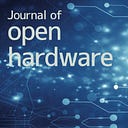The best public investment in R&D? Think open.

This blog is part of a series on open hardware and key messages for public policy. Read the introduction and access other #OHpolicy blogs here.
By Greg Austic, OurSci
Of 1250 US commercial companies surveyed in 2020, 70% of the total code base is open source and 99% of companies used at least some open source code [1]. That means 70% of commercial companies’ software resources are, in fact, public resources (i.e. open source). This is especially striking considering that, unlike roads, airports, and public libraries, open source software is NOT managed by or paid for by any government entity. At least from society’s perspective, it’s both free as in freedom (i.e. speech) and free as in free beer (i.e. gratis).
Open source is a public resource
If that feels hard to believe let’s make this open source resource less esoteric — think about LEGOs. Most bits of open source software are designed to do one specific thing well, just like each LEGO brick looks unique and is used in a different way. The original LEGO brick may have been developed for a specific kit but, like LEGOs, that same brick can be used to build other things. In open source software, it means a component built to serve one company’s needs can also be used for many other things, like building government services software, educational software, games for kids, or data analysis tools for scientists [2]. The magic of software is that, unlike a LEGO brick, you can make a copy of software for free. So the only cost is designing the brick, not replicating it.
After 20 years of increased open source adoption, we now have many standard LEGO “bricks’’ in software. As a result, developers spend most of their time building “houses” (e.g. building software services), not designing the “bricks” (the coding libraries they are built on). Similarly, businesses now compete to build “houses” and not “bricks”, shifting markets to compete around software services. When developers do build a “brick”, they release it under an open source license with the hope that others will use and improve it, creating a pre-competitive space where everyone contributes and everyone benefits. The ability to use these publicly available building blocks is a major reason why software development is so fast and flexible and the tech industry represents 10% of the American economy.
Open source is a proven model
The open source model isn’t limited to software, but can be applied to physical products and technologies too. While it has promise in many sectors of the economy, let’s focus on one sector that is uniquely positioned to benefit from this new approach: research and development.
R&D is science in action. It happens in companies, non-profits, universities, governments, and people’s backyards [3]. Just like software, research builds heavily on itself — not only the knowledge, but also the technology (hardware, software, processes and tools). And just like LEGOs, the more time researchers spend building “bricks”, the less time they have to solve the actual problem. For example, we can’t build trusted, global climate data models if we’re building many different proprietary climate sensors with opaque standards producing data we can’t independently validate.
The world is drowning in wicked research problems — climate change, biodiversity loss, food and water insecurity, global pandemics — you get the gist. But the world of research is starting to look more like the world of software because we are fundamentally changing the way we ‘do’ science.
The protocols that researchers use (think lab tests, field measurements, or experimental designs) can be shared as code and available in real time, not as PDFs only available in a pay-walled journal two years after the work was done.
The data from the work (from running DNA sequencers to downloading satellite data to running benchtop lab tests) can be stored and managed in standardized machine-readable formats, accessible, aggregated, and retrievable via the web.
And even the machines themselves — spectrometers, pipettes, camera traps, and air monitors — can increasingly be made anywhere. They can be designed to be manufactured on-site with a 3D printer or other inexpensive tools and easily modified for a specific application. Efficient global commerce ensures that even specialty parts are now shippable from anywhere, to anywhere.
The “bricks” of science can now be replicated at very low cost. The conditions are ripe for an open source model to thrive.
Open technology is critical infrastructure worth investing in
The research community is already buying and using more open source technology for the same reason 99% of US companies do: it’s cheaper, better, and faster. But we don’t have 20 years to wait before open source speeds up innovation in science. There are too many wicked problems we must solve today. This is a textbook opportunity for a small amount of investment to produce major public benefits. We need to:
- Incentivize technology developers to create more and better “bricks.”
- Support technologies that enable individual researchers to make and modify those “bricks.”
- Organize existing research organizations (universities, companies, non-profits) to recognize, prioritize, and actively support this shared public research infrastructure in the long term.
We are extremely fortunate that across the private sector, and especially among scientists and researchers, groups are finding ways to build and maintain public, open source technology that benefits everyone. While we don’t need the government to build, manage, or even fund it, a small investment in open source technology would produce tremendous returns as we enter the next 20 years full of complex global problems needing many well-designed bricks.
Notes:
